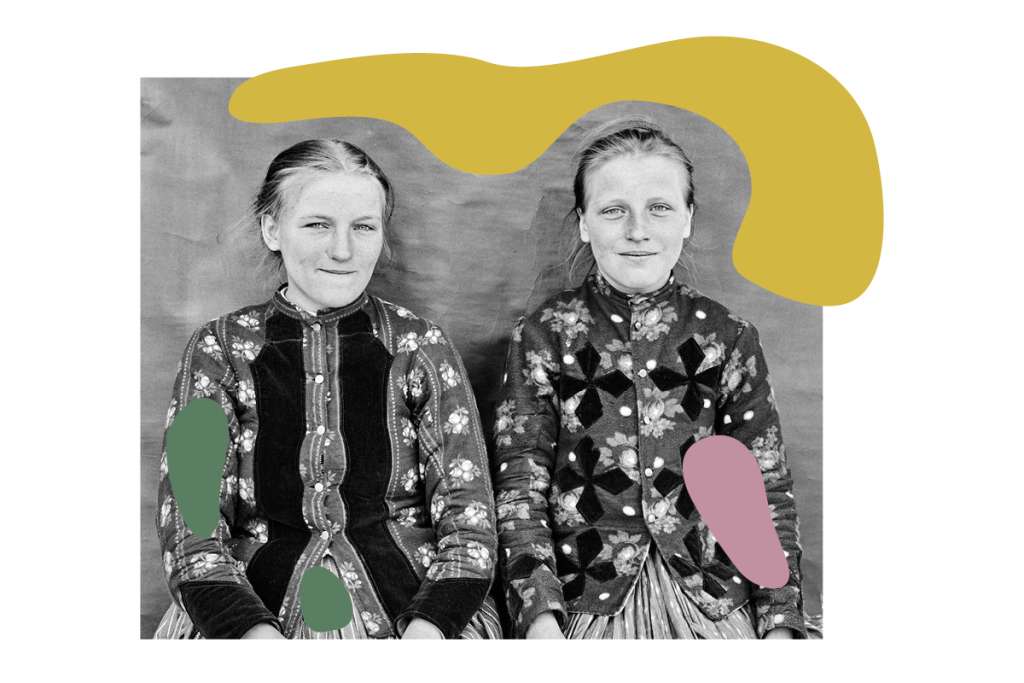EXPOSURE TIME / DEVELOPMENT TIME

28.10.2023-05.04.2024 / Ethnographic Museum in Cracow / 46 Krakowska St.
The exhibition "TIME OF LIGHTING / TIME OF EXPRESSION. Ethnographic Photography from Malopolska at the Turn of the 19th and 20th Centuries" will show over one hundred and seventy photographs selected from the oldest collections of the Ethnographic Museum in Cracow. The source material will be negatives on glass plates and small paper prints made in noble techniques. On the basis of their digital reproductions, large-format prints will be prepared, which will allow one to see the wealth of representations and information contained in the photographs.
The photos on display were taken in the villages and towns of Lesser Poland in the late 19th century and the first three decades of the 20th century, and depict life in the region at the time: the customs of the inhabitants, their appearance, their work, their homes and surroundings.

The title of the exhibition, referring to the terms of the traditional photographic workshop, suggests two metaphorical perspectives on the reception of photographs: "exposure" - the circumstances of their creation 100 years ago, and "development" - the impact and reception of these images today.
The authors of the photos came from different backgrounds and the motivations for photographing them varied.
Seweryn Udziela, a teacher and ethnographer, collected photographic material for the Cracow Ethnographic Museum, of which he was the founder. Jan Szczęsny Płatkowski of Myślenice, a clerk, folklorist and writer, illustrated his literary works with photographs. Leopold Węgrzynowicz, a teacher of young people and editor of the folklore magazine "Orli Lot," used photography for popular science in his articles on the countryside, lectures and lessons. Walery Eljasz Radzikowski, a Cracow painter and expert on the Tatra Mountains, recorded the mountain landscape in photography as a kind of sketch for paintings, and also published his photographs as postcards. Wladyslaw Postawka, a landowner from the vicinity of Kazimiera Wielka, a musician and enthusiast of all kinds of technology, commemorated his family, employees and landowners. Eugeniusz Stercula, a pharmacist and "awakener of Polishness" in Orava, was a committed social activist involved, among other things, in collecting and photographing local folklore, while Karol Chotek, an ethnographer from Prague, collected material for scientific purposes in the village of Bronowice near Krakow.
These and other, also anonymous, authors of the photographs on display were united by the need to record the changing reality, not the one stylized in the then popular photo ateliers, but the living, authentic one, documented in the field. They also shared an unusually strong need at the time, understood as a patriotic mission, to recreate historical continuity and define the cultural identity of an independent Poland.
The creators of the photographs had the intention of preserving an image of their world for future generations - including us. The exhibition allows us to reread the stories recorded in the images, filtered through contemporary knowledge and experience, history and memory, both collective and private.
It can be a time of evoking associations, memories and emotions, discovering fragments of past reality and confronting one's own ideas about it.
The exhibition will be accompanied by antique objects, such as a bellows camera and an authentic negative on a glass substrate made with it. A contemporary composition created from sounds recorded at some of the locations depicted in the photos will also be an integral component.
Curators, photo arrangement: Anna Bujnowska, Anna Sulich
Artistic concept, arrangement design, visual identity: Agata Biskup
Collaboration and translation: Anna Sak
Editing and proofreading: Ewa Slusarczyk
Graphic design of photographs: Andrew Najder
Production of photographic prints: Art Printing House of the Institute of Art and Design at the University of the National Education Commission in Krakow / Andrzej Najder, Rafał Malinowski, Joanna Jemioło, Gabriela Kur, Miłosz Najder
Sound design: Konrad Gęca
Video: Marzena Kolarz
Conservation care: Agata Barczynska, Katarzyna Mazurek-Lebowska, Katarzyna Wilaszek-Rozwadowska, Renata Palka
Production and assembly: Tomasz Ostafin, Paweł Przybylski, Grzegorz Kurek, Marcin Koterwa, Andrzej Gąsiorowski
Technical consultation: Adrian Tomasik, Jacek Szymanski
Promotion: Natalia Ciemborowicz-Luber, Joanna Grabeus, Olga Łuczyńska-Gawron
Education Program: Urszula Sobczyk, Miroslaw Bury, Agata Ziomek
Accessibility Consultation: Anna Szelingowska
